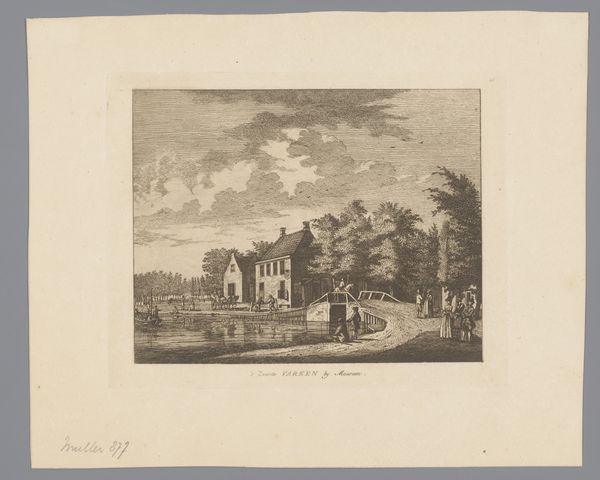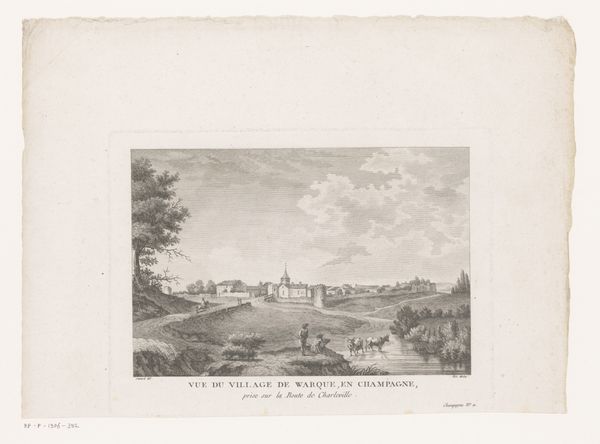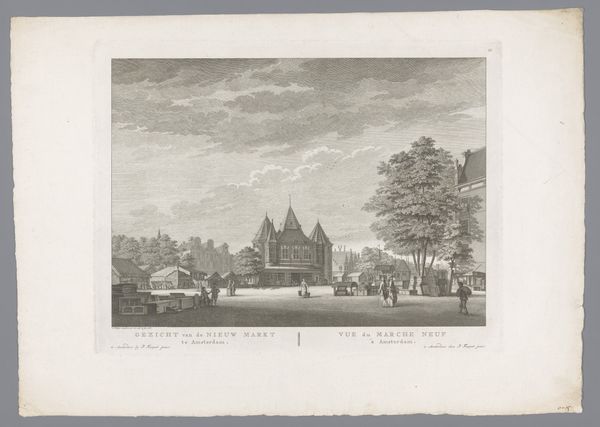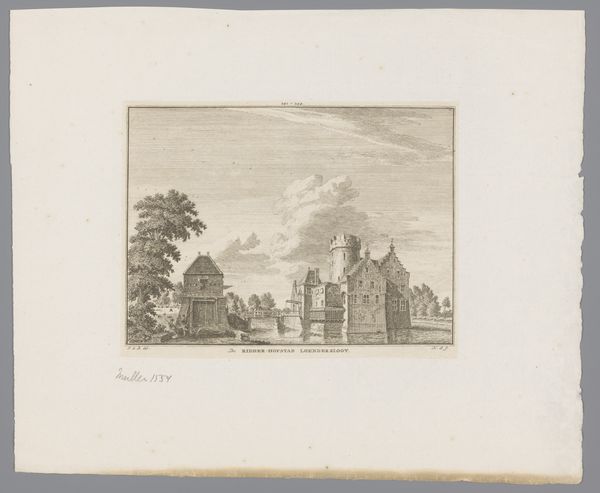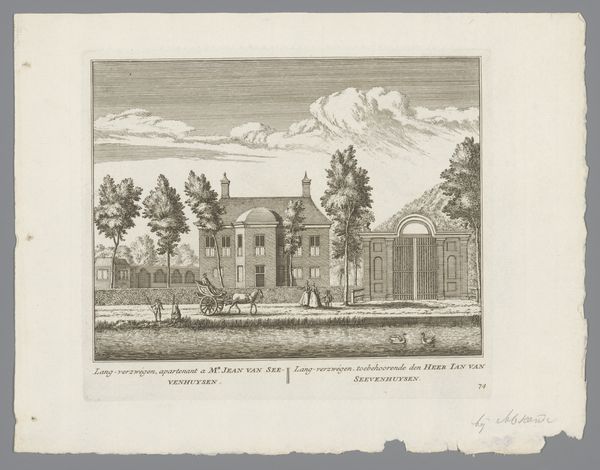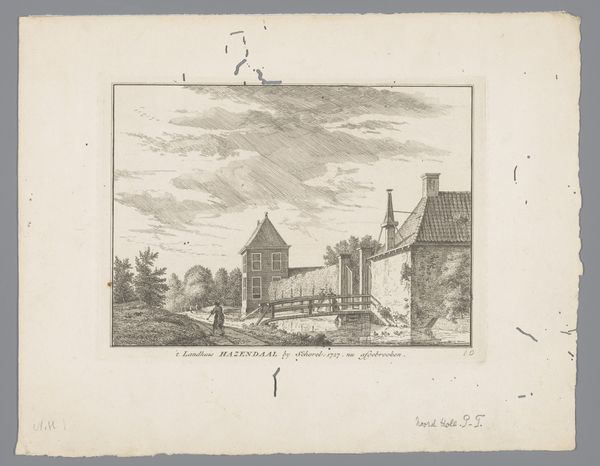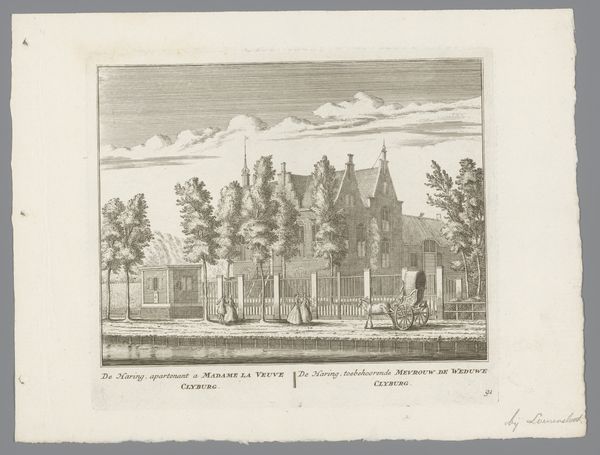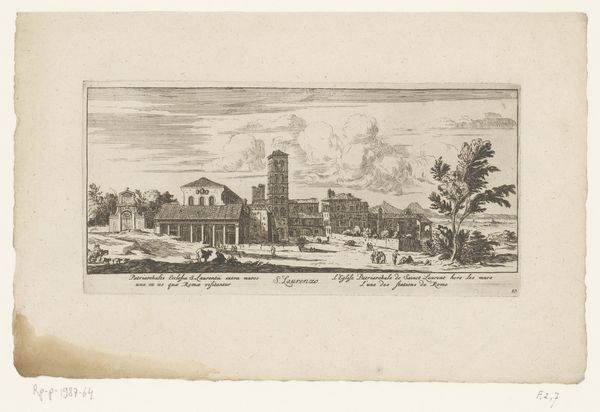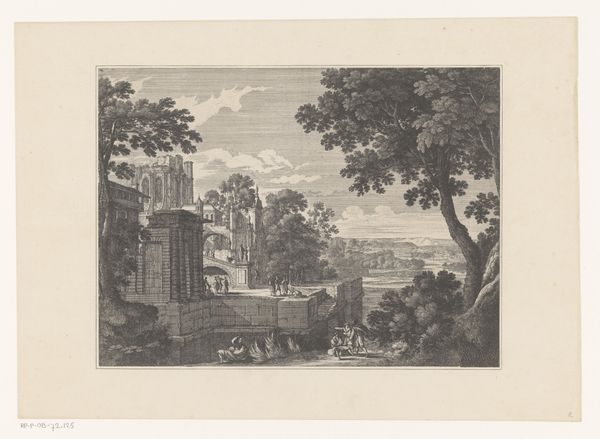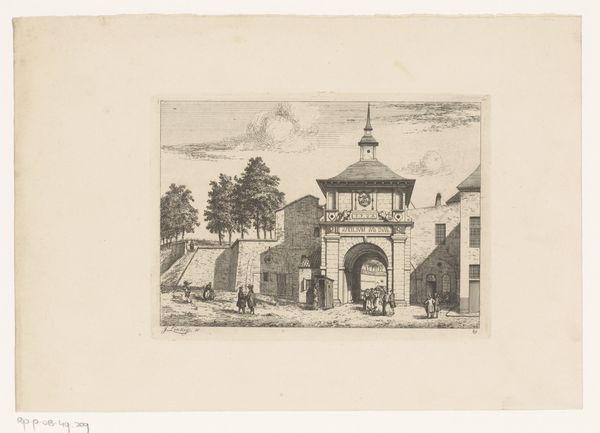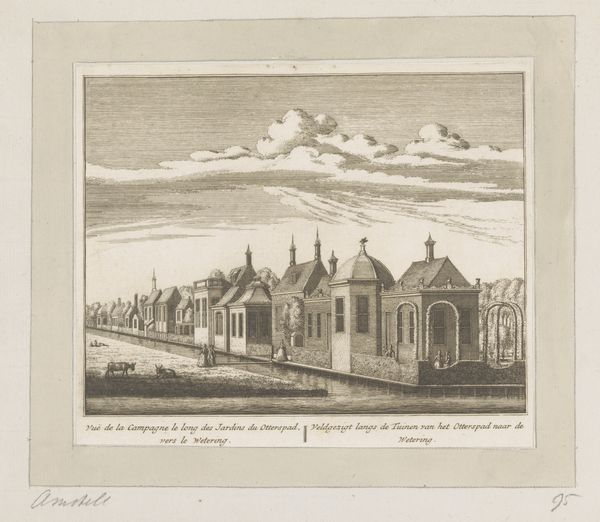
print, etching, engraving
#
neoclacissism
# print
#
etching
#
landscape
#
perspective
#
line
#
cityscape
#
genre-painting
#
engraving
Dimensions: height 172 mm, width 247 mm
Copyright: Rijks Museum: Open Domain
Carel Frederik Bendorp created this view of Kockengen using etching, a printmaking technique that democratized image production in the 18th century. The process begins with a metal plate covered in a waxy, acid-resistant ground. The artist scratches an image into this ground, exposing the metal beneath. The plate is then immersed in acid, which bites into the exposed lines, creating grooves. Ink is applied to the plate, filling these grooves, and the surface is wiped clean. Finally, paper is pressed against the plate, transferring the ink and creating the print. Notice the fine, precise lines, achieved by skilled labor with specialized tools. Etching allowed for the mass production of images, fueling a growing consumer culture. While seemingly a neutral depiction of a Dutch village, this print implicates broader systems of labor, production, and consumption. It reminds us that even seemingly straightforward images are deeply enmeshed in the social and economic landscape of their time.
Comments
No comments
Be the first to comment and join the conversation on the ultimate creative platform.
